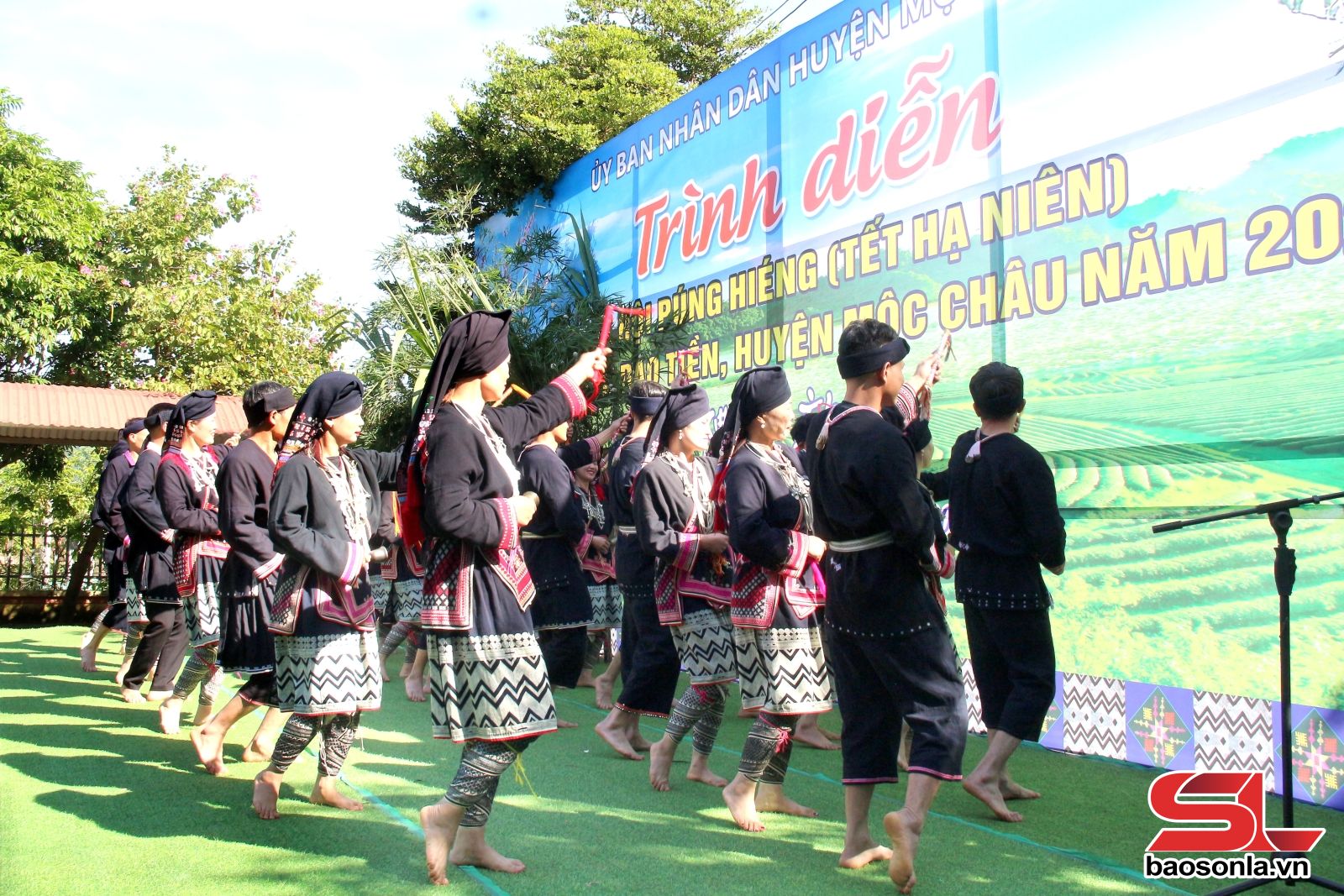Under the ministry’s Decisions No. 2213/QD-BVHTTDL, 2214/QD-BVHTTDL, and 2215/QD-BVHTTDL dated June 27, 2025, the Xen Lau No festival of the Thai Den (Black Thai) in Yen Chau; the Pung Hieng festival of the Dao Tien group in Moc Chau; and the traditional papermaking craft of the Mong group in Moc Chau, Yen Chau, Mai Son, Thuan Chau, Muong La, Bac Yen, and Phu Yen, were included in the list.

The Pung Hieng festival of the Dao Tien group.
The Xen Lau No festival is traditionally held in spring by the Black Thai to express thanks to their ancestors, river and mountain deities, and to honour shamans who have helped heal the sick.
The festival features both ritual and festive parts woven together, expressing gratitude to the heavens, spirits, and forebears for good health and bountiful harvests. After completing part of the ceremonial offerings, villagers join in dancing around the “Xang Bok” (Neu tree), praying for favourable weather, fertile crops, and a life of health, happiness, and prosperity.
The Pung Hieng festival, observed by certain clans of the Dao Tien ethnic group, is a deeply rooted ancestral tradition passed down through generations. Held every three to four years during the Lunar New Year, the multi-day event (typically lasting four to six days) is meant to give thanks to ancestors and deities, and to pray for prosperity in the year ahead.
Although originally a clan-based ritual, Pung Hieng has evolved into a festival for the entire village, fostering strong community bonds. It carries profound cultural and spiritual significance, serving as a reminder of ancestral gratitude, moral teachings, and the importance of unity.
The traditional papermaking craft of the Mong people dates back generations. Unlike conventional paper made for writing, this type of paper is primarily used in festivals, rituals, and ancestral worship. It carries deep symbolic meaning - serving as a medium to convey wishes for peace, good fortune, and blessings for all family members, especially during the Lunar New Year.
Having three new elements included in the national intangible cultural heritage list is a source of pride not only for the ethnic communities who have preserved and nurtured these traditions, but also a testament to Son La province’s ongoing efforts in safeguarding and honouring intangible cultural heritage.
This recognition also lays a vital foundation for integrating cultural preservation with sustainable tourism, economic, and social development in the new era.























You have 500/500 characters left
Please enter 5 or more characters!!!